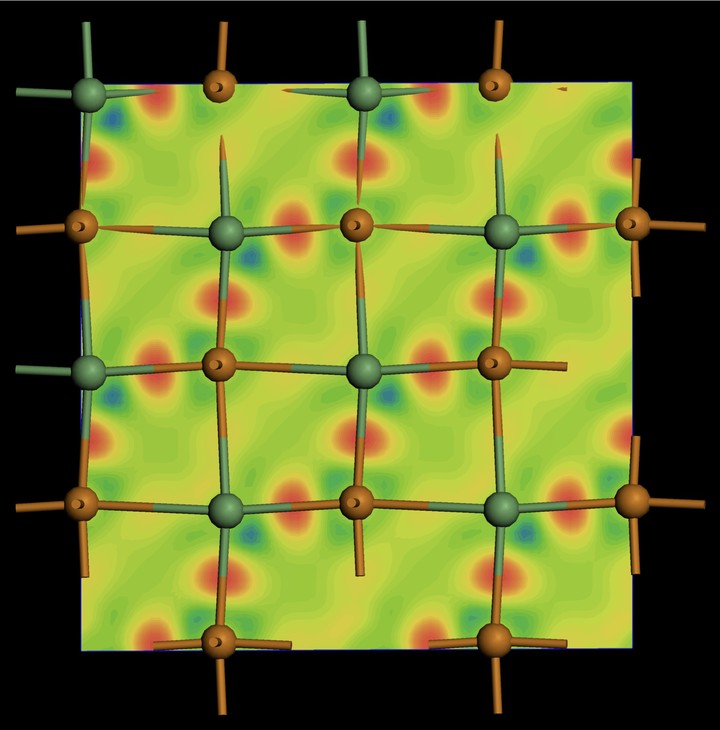Density-Functional Theory
 Charge density difference plot for a GeTe. Charge pileup indicates a covalent bond.
Charge density difference plot for a GeTe. Charge pileup indicates a covalent bond.Density-functional theory (DFT) is used to predict a variety of material properties. In addition, ab-initio molecular dynamics based upon DFT is used to examine structural dynamics and to generate metastable (amorphous phases) by means of a melt-quench process. The plane-wave codes VASP (Vienna Ab initio Simulation Package), CASTEP (CAmbridge Serial Total Energy Package), as well as the FP-(L)APW+lo code Wien2K are used to investigate both structural and electronic properties of samples under study. In addition the real-space Greens function code Feff9 and FMDNES codes are used for the simulation of x-ray absorption data. The figure above shows the charge-density difference (CDD) for a cross-section of the GeTe lattice which has both short and long bonds. The CDD plot is constructed by taking the difference between the charge density of the solid and pseudo-atoms. As such the pileup of charge between two atoms is suggestive of a covalent bond as describe by Pauling.